Tiffany Tsao (Editor-at-large, Indonesia): Family sagas make up my month’s leisure reading so far. Jeffrey Eugenides’s Pulitzer-Prize-winning Middlesex and William Faulkner’s Absalom, Absalom! have been on my to-read list for several years, and it was with a combination of sheepishness and triumph that I finally got round to cracking open their spines. One occupational hazard of being a literary academic is that you often lack the energy to graze beyond your particular fields of expertise. As a recent post-academic, it has been a great pleasure indeed to read more in the way of the American “classics”—and not just so I can finally stop embarrassing myself at dinner parties where I often disappoint fellow guests by not having read every work in the western canon, all the latest prize-winners, and everything listed on the latest “Top 100 great reads” list circulating the web.
Reviews
What We’re Reading in December
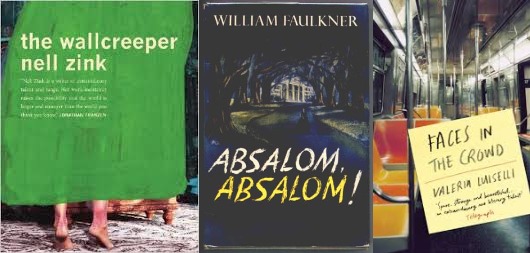
This December: family sagas, American classics, flash fiction, and meta-translation
Translating the Soviet Union: A Guide to Getting Russia
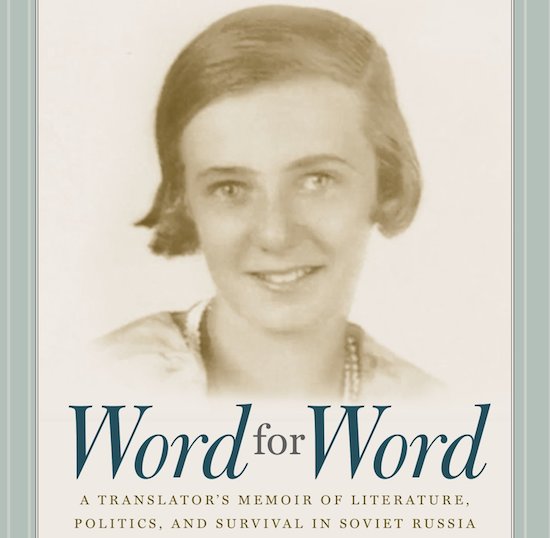
A review of “Word for Word,” by Lilianna Lungina and Oleg Dorman
I am often asked what life is like in Russia and I struggle to provide a judicious answer. Americans, I think, want to understand what to expect from a shifting Russian state. The formative years of the wheelers and dealers of modern-day Russia were experienced under the psychological weight of Khrushchev, Brezhnev, and Gorbachev, and if someone wishes to understand Russia, she would do well to study the complexities of the Soviet baby boomers. To answer our new question, “What was life like in the Soviet Union?” I can now answer with:
Read Word for Word.
It is not often someone buys you a book and refuses to speak with you until you read it, but this happened to me with Word for Word, out now in translation from Overlook Press. The title is an adulteration of the original title podstrochnik, a so-called “trot” or bare literal translation of a text that a translator processes into a work of art. Written as an extended interview and based on the documentary film of the same name by Oleg Dorman, Word for Word is the memoir of Lilianna Lungina, perhaps the most successful translator of the Soviet Union.
What We’re Reading in November

Emma Jacobs on Syrian writer Osama Alomar’s uncanny short fiction, and Erin Gilbert on solitude in three seminal works including “Tristana”
Emma Jacobs (assistant editor): I’ve been reading really haphazardly this month, dipping in and out of essays, short stories, and poetry. I tend to think of this as a bad habit, a symptom of my cyber-skewed hyper-active millennial-generation attention span, yadayadayada, but actually there’s something so rich about this chaotic way of reading and the unexpected connections that it sparks between very different books. Looking over some of my favourite reads from November, I notice that each one meditates in some way on the lightness of the ephemeral moment.
This is particularly prominent in Photographs Not Taken, a collection of essays by photographers reflecting on the most memorable images they never captured. These scenes went unphotographed for a variety of reasons, but most often it was because an elusive and overpowering feeling made the photographer hesitate just a second too long. What’s left is a collage of imaginary negatives, moments that are tangible only in their absence. But rather than reading like a catalogue of regrets, the book chips away at the mythology that surrounds the act of “taking” a photo in the first place. As each photographer considers the images that passed them by, they tackle questions of where the documentarian impulse comes from and how the existence of a photo changes our memory of the event itself. The quality of the writing is a little up and down, but there are many pockets of prose that crystallise the moment of perception in surprising ways.
In Review: “The Tower” by Uwe Tellkamp

An impressive and occasionally surreal collage of scenes and character studies from a country that is not mourned but most certainly vanished.
The Tower, by Uwe Tellkamp, may appear to be a monolithic, singularly heroic literary act by a surgeon and survivor of the indignities of the German Democratic Republic. This man, who lived to tell the tale, so to speak, penned an epic about a bourgeois family which has retreated into a kind of inner emigration in the crumbling but stately villas of the posh Weißer Hirsch neighborhood in Dresden. But The Tower is much more complex than that, and intellectually rich. The story, with echoes of Thomas Mann’s Buddenbrooks, focuses on three men of various ages and various levels of complicity with the putrefying system of 1980s GDR, and it is now (finally!) available in print in English translation.
Who are these three men? Christian is a pimply and ambitious young student who dreams of following his father, Richard, into the field of medicine; he ultimately signs up for three years of military service in the hopes of securing a spot as a medical student. His efforts to mimic Party loyalty are largely successful until his collapse as a soldier. His father Richard’s 50th birthday party opens the novel and initially Richard appears equally eloquent and morally blameless. However, numerous affairs and a secret second family make him a pawn in the hands of the Stasi. Finally, Meno, Christian’s maternal uncle—something of a mentor to the teenage boy, and a former botanist—works as an editor at one of the GDR’s few high-quality imprints that frequently ran short on paper, rounding out the trio of protagonists.
New in Translation: November 2014
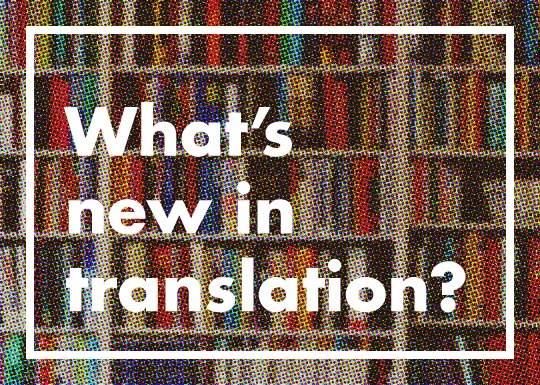
Wolfgang Koeppen’s Youth, Vietnamese poetry by Nguyen Phan Que Mai, and Melania G. Mazzucco’s Limbo
 The strength of Wolfgang Koeppen’s Youth (Jugend), an autobiographical account of the German author’s formation, lies in the small stuff: its sentence constructions, its often-startling words. These sentences can go on endlessly, such as the evocation of its setting that starts the book. After a first, short sentence—“My mother was afraid of snakes”—Koeppen goes on to describe the area of Rosental in one elaborate sentence that continues for the next three pages. This sentence twists and grows, covering furniture, landmarks, food, even the history of the young narrator’s family, until the speaker plunges into a fantastic rant against the place:
The strength of Wolfgang Koeppen’s Youth (Jugend), an autobiographical account of the German author’s formation, lies in the small stuff: its sentence constructions, its often-startling words. These sentences can go on endlessly, such as the evocation of its setting that starts the book. After a first, short sentence—“My mother was afraid of snakes”—Koeppen goes on to describe the area of Rosental in one elaborate sentence that continues for the next three pages. This sentence twists and grows, covering furniture, landmarks, food, even the history of the young narrator’s family, until the speaker plunges into a fantastic rant against the place:
[…] while all around the streets smelled complacently of the anatomy of clinics, the sweat of patients, the horror of the dying, the fear of the examinee and the guilty innocents at the mercy of the prison-warders […] of the vanity of professors, the dead hearts of officials, the frowst of the laws, and then the poverty of the Lange Reihe and the indurated humiliation of the gray school, how I hated the city and wished it consigned to the snakes (5).
From the Orbital Library: “Another Man’s City” by Ch’oe In-ho
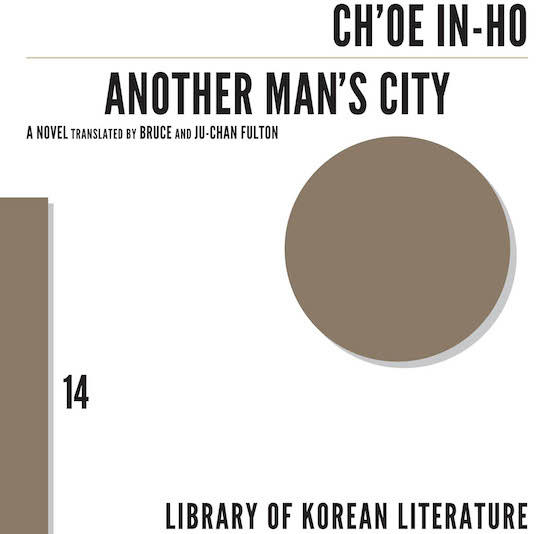
“As he progresses on his quest, K comes to realize that a vast intelligence, inhuman but capable of taking human form, is guiding events.”
God often plays an outsized role in science fiction, if only by not showing up. In H. G. Wells’ The War of the Worlds, for example, the narrator encounters a deranged curate—that’s an assistant to an Anglican priest—in the turmoil following a Martian invasion. The two hide in a ruined house, where the holy man rants on how the extraterrestrials are God’s punishment for a fallen world. The narrator must incapacitate him with a shovel to prevent the enemy from detecting them. Later, as the Martians fall prey to a virus benign to humanity, the irony becomes clear: Matter, not spirit, drives the universe.
But the genre can’t quite leave Christianity, and many SF writers have speculated in ways much more commodious to the religion. In November 1974, Philip K. Dick received a mystical vision that would later become a legendary episode in the history of the genre. At home, recovering from an operation on an impacted wisdom tooth, he received a visit from a strange and beautiful woman wearing an ichthys, the Christian symbol of the fish, as a gold pendant on her neck. Dick then described a “pink laser” shooting from the symbol directly into his mind and imbuing him with divine logos. This included the author catching a glimpse into a parallel life as Timothy, a persecuted Christian living in 1st-century Rome. The vision set off a torrent of creative activity, which included Dick’s later novels VALIS, The Divine Invasion, Radio Free Albemuth, as well as an 8,000-page journal of philosophical speculations, selections of which were published in 2011 as The Exegesis of Philip K. Dick.
In the Meantime Nothing Happens

A review of the Belgian documentary film Ne Me Quitte Pas—a tragicomic ode to pain, boredom, and the spaces in-between
There’s a moment in the documentary Ne Me Quitte Pas that should be utterly unremarkable but got to me beyond all logical proportion. We’re about an hour into the film, and the protagonist, Marcel—middle-aged, morose, pyjama-clad—is sitting alone in the hospital room where he’s being treated for alcoholism. Before him is a large plastic bottle, filled to the peak with a litre of water, and when he goes to pick it up he spills a little. He curses, stands up, and with almost balletic attention to detail embarks on an intricate process of cleaning it up, manoeuvring paper towels as if polishing a masterwork of carpentry. Finally satisfied, he walks across the room, bins the towels, trudges back, sits down with a sigh, slides the bottle over, and delicately extends his hand around it once more to take a sip—only to spill it again. “Merde!” he yells, “C’est pas vrai!” READ MORE…
What We’re Reading in October

Ghost noir, death in Mexico, and what artists do after they’ve found success (and a lot of it): reading recommendations from Asymptote!
Ellen Jones (criticism editor): For my birthday this year I was given Outlaws (Las Leyes de la Frontera) by Spanish author Javier Cercas, translated by Anne McLean. I immediately broke that fundamental rule and judged it by its cover—the Bloomsbury hardback has one of the most exquisite jacket designs I’ve seen in a long time. Fortunately I wasn’t disappointed by what was inside. Inspired by the life of Juan José Moreno Cuenca, a notorious criminal known as “El Vaquilla,” the narrative follows a gang of teenagers led by a soon-to-be famous juvenile delinquent styling himself “Zarco.” At the novel’s core is the relationship between Zarco, the media persona, and Antonio Gamallo, the real person behind bars. In post-dictatorship Catalonia where the after-effects of Franco’s rule are still being felt, the gang members are divided by class and their fates apportioned accordingly. The novel is narrated entirely through reported speech, allowing Cercas to explore the unreliability of memory through a series of voices that are always measured and deliberate (The Telegraph’s description of it as a “rip-roaring crime romp” seriously misses the mark).
Many translators might agree that language is song, a kind of mouth music. Each text has a unique time signature and timbre, and when we translate voice, we have to open our ears before opening our beaks to become songbirds. And translators have a special insight into how a language’s sounds are made up of tones: pitches that help to convey meaning. A toneless voice, whether spoken, written or translated, is like a song without melody.
I learnt recently that mouth music is the alternative name for lilting, the subtle rise and fall of words in a sentence, and originally a style of Gaelic singing. Given that the nitty-gritty of literary translation is the picking up on nuances in voice, it strikes me as odd that translators, myself included, don’t dedicate much airtime to lilting. Why don’t we talk about lilting when we talk about voice? Isn’t it odd that translation theorists—boasting the loftiest and loveliest buzzwords in all the humanities—haven’t yet adopted it? After all, lilts are not merely ephemeral: a good prose stylist (and good translators too) can conjure them in writing. In James Joyce’s Dubliners, “The Dead” presents a good example of a lilt woven into a text, one that reverberates off the page when read aloud:
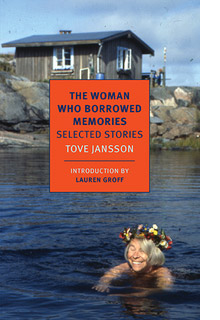 Isolation: that is the most powerful emotion that emanated from most of the stories in The Woman Who Borrowed Memories: Selected Stories of Tove Jansson. As I read them, breathlessly, I was plagued with that wonderful, excruciating sense of unease that radiates from a good, strong, melancholic book. It’s the tingling that comes before the numbness; that profound yet unknown sensation of loss that makes you sigh.
Isolation: that is the most powerful emotion that emanated from most of the stories in The Woman Who Borrowed Memories: Selected Stories of Tove Jansson. As I read them, breathlessly, I was plagued with that wonderful, excruciating sense of unease that radiates from a good, strong, melancholic book. It’s the tingling that comes before the numbness; that profound yet unknown sensation of loss that makes you sigh.
The stories mostly center around one protagonist and are written either in first person or a close third. Set in Scandinavian landscapes, strange and nameless cities or within the confines of a house, these stories follow the protagonists as they become locked in their own minds, detached from the world around them, either physically (the illustrator in Black-White), mentally (Aunt Gerda in The Listener) or emotionally (the sculptor in The Monkey). Often they are propelled into mysterious travel, accompanied by a stranger to whom they are instantly drawn and who highlights their own weakness (The Wolf and A Foreign City). Other times they are experiencing some undefined breakdown of their own, revealing only the symptoms, and not the cause, to the reader (as in The Storm or The Other).
In Review: “A Tabby-cat’s Tale” by Han Dong

“To return to ‘small talk’ from the social and political imperatives of Mao-era and post-Mao-era fiction is in itself a political act.”
In 1931, Ba Jin, anarchist and pioneer of modern Chinese fiction, wrote “Dog,” a short story in which a desperate street urchin—envious of the more comfortable lives of foreign-owned lapdogs—deludes himself into believing that he himself is a dog. Though artfully written and moving, Ba Jin’s “Dog” is unmistakably agitprop: the “dog” is really a man, and the man is really a symbol of a China cowed by imperial powers and rapacious warlords.
About seventy years later, Han Dong, a Chinese writer best known for his nonconformist poetry in the eighties, writes a novella entitled “花花传奇” (Hua Hua Chuanqi), translated by Nicky Harman in a recent Frisch and Co. web release as A Tabby-cat’s Tale. By way of contrast with Ba Jin’s “Dog,” Han Dong’s title tabby, Hua Hua, is simply a cat, albeit a very odd one. And if the reader comes to this novella seeking insight into the grand moral dramas of dissenters and dictatorships, she will be gravely disappointed. Instead, with the great care of someone who truly loves animals, Han Dong relates the daily drudgery of preparing catfish guts for Hua Hua’s nightly meal; the irritation of picking up after an animal who refuses to confine his excrement to a box; and the nightly chore of manually picking through the minion of fleas that infest the tabby and drowning them in a bowl of water until “the surface of the water is black with Tabby’s fleas.” And yet, this shaggy cat story is told satirically in a grand register that would more befit the historical dramas of Ba Jin’s “Dog.”
Don’t Trip. “Sidewalks,” by Valeria Luiselli—in Review

A look at Valeria Luiselli’s excellent essay collection Sidewalks, translated by Christine MacSweeney for Coffee House Press
Prose and I are having a moment.
I don’t mean this in the glamorously ephemeral, André-Leon-Talley sense; I mean this in the emotionally fraught, tightlipped-dinner-party sense. I just can’t seem to enjoy it as much as I have in past twenty-odd years of my life. I find myself bored by the contrivances of exposition; I roll my eyes at narrative inventiveness, and quote-unquote characters and their grievances simply exhaust me.
From the Orbital Library: “Definitely Maybe”
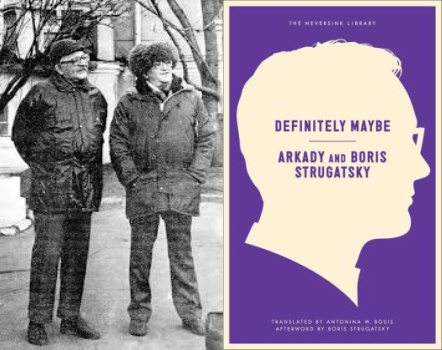
Russian science fiction goes claustrophobic in this work by the Strugatsky brothers—a review
There’s something disconcertingly contemporary about Definitely Maybe, a novella by the masters of Russian science fiction, brothers Arkady and Boris Strugatsky. The book was first published in the Soviet Union in 1974 and has every appearance of taking place in that world. Earlier this year, Melville House brought out the first unexpurgated English translation, a task impossible before the dissolution of the Marxist-Leninist state in 1991. This may seem like ancient history to those born into a world of ubiquitous, instantaneous digital communication. But within this slim volume, there are hints of the frustrated ambitions and pervasive distraction that define our present.
Dmitri Malianov, an astrophysicist, is on the cusp of a discovery, one that in his estimation might very well bring him a Nobel Prize. His wife and child are away, visiting family in Odessa. With nobody but his pet cat to take care of, Malianov has the time and freedom to make a breakthrough. But soon come anonymous deliveries of expensive food and alcohol. Then friends and colleagues start calling him out of the blue, first by telephone and then in person, nervously asking questions about the progress he’s made. A woman unexpectedly shows up at Malianov’s door, a school friend of his wife, beautiful enough to drive the scientist to distraction. Events are conspiring to keep him from his discovery. READ MORE…
What We’re Reading in September

An overlooked comedic work by Thomas Bernhard, ghostly fiction from Israel, and more reasons to read Guadalupe Nettel's latest short stories!
Sophie Hughes (editor-at-large, Mexico): I happen to be reading two collections of short stories that focus on human relationships. Guadalupe Nettel (Mexico City, 1973) is a world-class writer, slowly emerging out of Mexico and just now available in translation. Natural Histories, translated by J. T. Lichtenstein, was published in June by Seven Stories Press in the United States, and you can read a lovely, illuminating, and entertaining piece on the process by Lichtenstein in Asymptote’s July 2014 issue.


